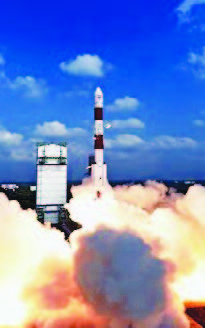NEW DELHI (TIP): Isro successfully placing a record 104 satellites—101 foreign satellites and three Indian ones—in orbit in a single launch cements India’s position as a global leader in space technology.
But, more important, it also underlines the fact that the space agency has made innovation in low-cost space technology somewhat of a habit, and that could pay rich dividends in the coming years. In the present instance, there were 103 small satellites—apart from the main satellite, India’s Cartosat-2, that formed the bulk of the launcher’s payload—88 of which were from Planet Labs, an Amercian company that acquired Google’s satellite imaging subsidiary recently; the company was using Isro’s PSLV for the second-time.
In all, 96 of the 101 foreign satellites were from the US—the largest spender on space technology—while the rest were from Israel, Kazakhstan, the United Arab Emirates (UAE), The Netherlands and Switzerland. While UAE, whose own space agency was created only in 2014, plans to set up a human colony on Mars by 2117, Israel is a major spender on defence and agriculture, both of which require cutting-edge satellites in orbit to transmit critical intelligence.
All this should throw into sharp relief the opportunity Isro—or rather, its commercial arm, Antrix—has in building up a reputation as a low-cost, high-efficiency launcher of small satellites (weighing less than 500 kg).
According to a projection by Space Works Enterprise Inc, a research firm, roughly 5,000 “micro” (10-100 kg) and “nano” satellites (1-10 kg) need to be hurled into space in 2020—compared with just 92 launched in 2013. Over 60% of these satellites will be from the commercial sector—viz. companies with play in communication, weather-tracking, remote-sensing, providing high-speed internet in remote areas, etc. Softbank-funded OneWeb alone is looking to launch 648 small satellites, as per a Business Standard article.
